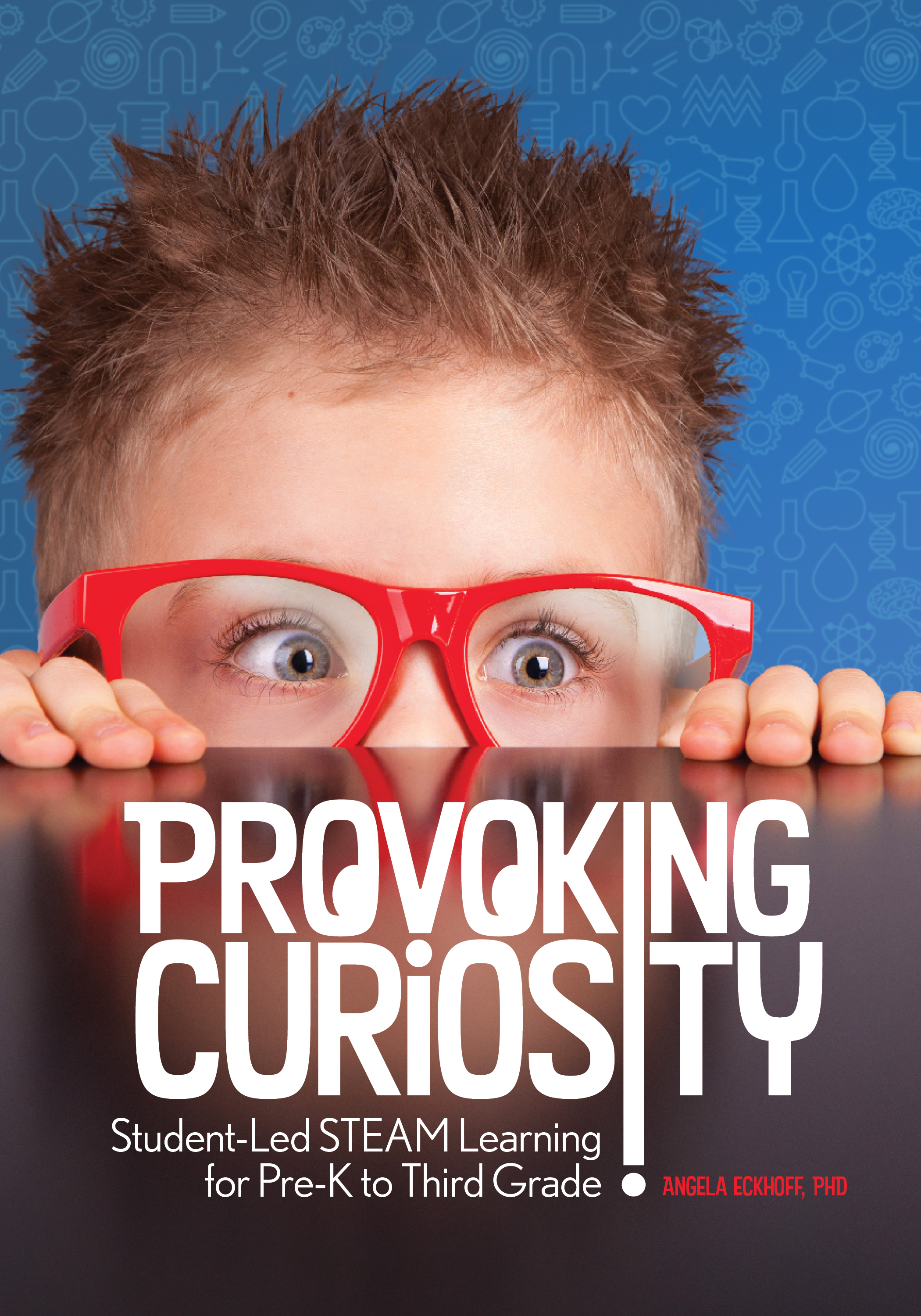Provoking Curiosity: Student-Led STEAM Learning for Pre-K to Third Grade offers a variety of STEAM provocations that can be used during less-structured classroom time. Through these provocations, which are child-driven explorations and interactions, children will be encouraged to think of new ideas and ways of thinking about the world around them.
In this book, author Angela Eckhoff, PhD offers some much needed insight into the world of childhood engineering. With the exception of blocks used in some pre-K and kindergarten classrooms, the engineering process is often overlooked in early childhood education. Through the use of every-day classroom materials such as paper and glue, you can learn how to engage your students with the creative engineering processes like never before!
Paper Structure Provocation
No one gets it perfect on the first try! That’s why it’s crucial to explain the engineering design cycle to the children in your class. One of the most important steps in the engineering process is creating prototypes. Prototypes, or models, help children transfer their ideas and plans into a tangible form. By drawing their structure and its different parts, children can slowly begin to bring their ideas to life! “Prototypes help an engineer think through their designs,” explains Eckhoff, “encourage your students to see revision as a valuable and important part of the process and not as being wrong or having created their plan incorrectly.”
Content and Skills Experienced
- Engineering: design-based thinking, planning
- Visual arts: creating 3-D sculptures
- Creativity skills: visualization, flexibility, originality, strategic planning
Materials
- A variety of paper
- Tape or glue
- Markers, crayons, or paint
- Pictures of buildings
Provocation Prompts
What will your structure look like?
What will your structure be used for?
Differentiation by Grade-level
This provocation is easily accessible for all students from pre-K through third grade. Younger students may need help from teachers or peers as they tape or glue parts of their structures. You can encourage older students to extend the experience by writing about their structures.
Provoking Curiosity: Student-Led STEAM Learning for Pre-K to Third Grade provides teachers of children from preschool through 3rd grade new and easy-to-execute STEAM learning experiences. Each activity is developmentally appropriate and engages children—individually, in small groups, or in one large group—to think, explore, and wonder. Each exploration builds on core ideas in the STEAM disciplines, develops higher-level thinking skills, and uses readily available materials in early childhood classrooms. Use STEAM provocations throughout your busy day: jump-start the morning; decompress and reenergize midday; occupy children who complete assigned classroom work early; or incentive children to complete a goal.
